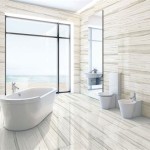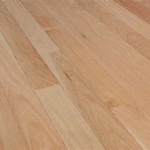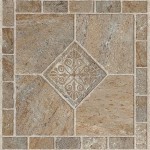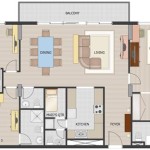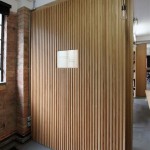Floor-to-Ceiling Windows in Bedroom Design: Maximizing Light, Views, and Space
Floor-to-ceiling windows are a prominent architectural feature in modern residential design. They represent a departure from traditional, smaller window designs, offering expansive views, increased natural light penetration, and a sense of spatial openness. When incorporated into bedroom design, these windows can transform the space from a simple sleeping area into a sanctuary that prioritizes aesthetics and well-being. This article will explore the various benefits, considerations, and design strategies associated with using floor-to-ceiling windows in bedroom spaces.
The integration of floor-to-ceiling windows in bedrooms is not merely a design choice; it represents a commitment to maximizing the connection between the interior living space and the external environment. This connection can have a profound impact on the occupant's mood, productivity, and overall sense of well-being. Furthermore, the increasing availability of energy-efficient window technologies makes this design option more viable and sustainable for a wider range of climates and architectural styles.
Key Point 1: Advantages of Floor-to-Ceiling Windows in Bedrooms
The primary advantage of floor-to-ceiling windows lies in their unparalleled ability to flood the bedroom with natural light. Natural light is essential for regulating circadian rhythms, which are crucial for healthy sleep patterns and overall body function. Unlike artificial lighting, natural sunlight contains the full spectrum of colors, which can positively affect mood and alertness. The increased exposure to sunlight can help alleviate symptoms of Seasonal Affective Disorder (SAD), a condition characterized by feelings of depression and lethargy during periods of reduced sunlight exposure.
Beyond the biological benefits, amplified natural light minimizes the need for artificial lighting during daylight hours, resulting in reduced energy consumption and lower electricity bills. This contributes to a more sustainable lifestyle and aligns with environmentally conscious design principles. The cost savings can be substantial over the lifespan of the windows, particularly when combined with energy-efficient glass options.
Another significant advantage is the enhanced connection to the outdoors. Floor-to-ceiling windows provide unobstructed views of the surrounding landscape, be it a cityscape, a garden, or a natural panorama. This visual connection can be incredibly calming and restorative, creating a sense of tranquility within the bedroom. The ability to wake up to a breathtaking view can significantly improve the quality of life and promote a more positive start to the day.
Furthermore, the expansive visual connection with the outside world can make a bedroom feel larger and more spacious. The absence of visual barriers between the interior and exterior creates an illusion of extended space, which is particularly beneficial in smaller bedrooms. This effect can be further enhanced by using light-colored interior finishes and minimalist furniture designs. The seamless integration of the indoor and outdoor environments creates a more harmonious and inviting living space.
Finally, floor-to-ceiling windows can significantly increase the aesthetic appeal of a bedroom. They serve as a striking architectural feature that adds a touch of modern elegance and sophistication to the space. These windows become a focal point, drawing the eye and creating a sense of drama. Coupled with thoughtful interior design, floor-to-ceiling windows can elevate the overall aesthetic of the bedroom, making it a luxurious and inviting retreat.
Key Point 2: Considerations When Implementing Floor-to-Ceiling Windows
While the benefits of floor-to-ceiling windows are numerous, several critical considerations must be addressed during the design and implementation phase. One of the most important is privacy. Large expanses of glass can compromise privacy, particularly in urban environments or densely populated areas. Strategically planning the placement of the windows to minimize visibility from neighboring properties is crucial.
Various solutions can mitigate privacy concerns without sacrificing the benefits of natural light and views. Options include installing privacy glass, which diffuses light while obscuring the view from the outside. Tinted windows can also reduce visibility and glare. The use of window treatments, such as blinds, curtains, or shades, provides adjustable privacy levels and allows for complete light control when needed. Automated window treatments offer added convenience and can be programmed to adjust based on the time of day or sunlight intensity.
Energy efficiency is another crucial consideration. Large windows can contribute to heat gain during the summer months and heat loss during the winter months, leading to increased energy consumption for heating and cooling. Selecting energy-efficient window options, such as double-pane or triple-pane glass with low-E coatings, is essential for mitigating these effects. Low-E coatings reflect infrared and ultraviolet light, reducing heat transfer and minimizing glare. Properly insulated window frames also help to minimize energy loss.
Furthermore, the orientation of the windows should be carefully considered. Windows facing east will receive abundant morning sunlight, while windows facing west will receive intense afternoon sunlight. South-facing windows will provide the most consistent daylight throughout the day. Understanding the sun's path and how it affects the bedroom's temperature and lighting is crucial for optimizing energy efficiency and creating a comfortable living environment. Overhangs or awnings can also be used to shade south-facing windows during the summer months, reducing heat gain.
Structural integrity is also paramount. Floor-to-ceiling windows require careful structural engineering to ensure that the building can withstand wind loads and other environmental factors. The window frames must be properly anchored to the building's structure, and the glass must be strong enough to resist breakage. Consulting with a qualified structural engineer is essential to ensure that the windows are safely and securely installed.
Cost is a significant factor to consider. Floor-to-ceiling windows generally cost more than traditional windows due to the larger size, specialized glass requirements, and more complex installation process. Creating a realistic budget and comparing quotes from multiple contractors is essential. While the initial investment may be higher, the long-term benefits of energy savings, increased property value, and improved quality of life can make it a worthwhile investment.
Key Point 3: Design Strategies for Bedrooms with Floor-to-Ceiling Windows
The design of a bedroom with floor-to-ceiling windows requires a holistic approach that considers the interplay between the windows, the interior furnishings, and the overall aesthetic. Minimizing visual clutter is key to maximizing the impact of the windows. Opting for minimalist furniture and décor allows the view to take center stage. Light-colored walls and flooring can further enhance the sense of spaciousness and reflect natural light throughout the room.
Consider the placement of the bed relative to the windows. Waking up to a stunning view can be a wonderful experience, but direct sunlight in the early morning may be disruptive. Positioning the bed strategically to minimize direct sunlight exposure or using window treatments that can be easily adjusted can help ensure a comfortable sleep environment. The orientation of the bed should also consider privacy concerns and minimize visibility from neighboring properties.
Integrate natural materials into the bedroom design to complement the connection to the outdoors. Wood flooring, stone accents, and natural fabrics can create a warm and inviting atmosphere. Indoor plants can further enhance the connection to nature and improve air quality. Incorporating elements that echo the surrounding landscape can create a sense of harmony and tranquility within the bedroom.
Lighting is critical for creating a comfortable and functional bedroom. While floor-to-ceiling windows provide ample natural light during the day, artificial lighting is necessary for nighttime use. Layered lighting, including ambient, task, and accent lighting, can create a variety of moods and cater to different activities. Dimmable lights allow for easy adjustment of brightness levels. Consider using smart lighting systems that can be controlled remotely or programmed to adjust automatically based on the time of day.
Window treatments can be used to enhance the aesthetic appeal of the bedroom while providing functional benefits such as privacy and light control. Sheer curtains can filter light and create a soft, romantic ambiance. Blackout curtains are ideal for those who prefer complete darkness while sleeping. Blinds or shades offer adjustable privacy and light control. Automated window treatments provide added convenience and can be integrated into a smart home system.
Finally, consider the overall style of the bedroom. Floor-to-ceiling windows can complement a wide range of architectural styles, from modern and contemporary to traditional and eclectic. The key is to create a cohesive design that integrates the windows seamlessly into the overall aesthetic. Whether opting for a minimalist, Scandinavian-inspired design or a more luxurious, bohemian-inspired style, the goal is to create a bedroom that is both visually appealing and functionally comfortable.

Floor To Ceiling Bedroom Windows Design Ideas

20 Bedroom Design Ideas With Floor To Ceiling Windows Part 1

Floor To Ceiling Windows For Scottsdale Home Pella Arizona

25 Floor To Ceiling Windows Ideas With Pros And Cons Digsdigs

How Floor To Ceiling Windows Help Shape A Home Elite Design Group

Floor To Ceiling Windows Literally Bedroom Baltimore By Turner Development Group Houzz

Floor To Ceiling Windows Contemporary Bedroom Pieces Inc

Floor To Ceiling Window In Master Bedroom

Bedroom With Floor To Ceiling Windows Contemporary Portland By Kuda Photography Houzz Au

12 A Couple Of Floor To Ceiling Windows Is Sure Make Your Room Wow If The View Cool Digsdigs


